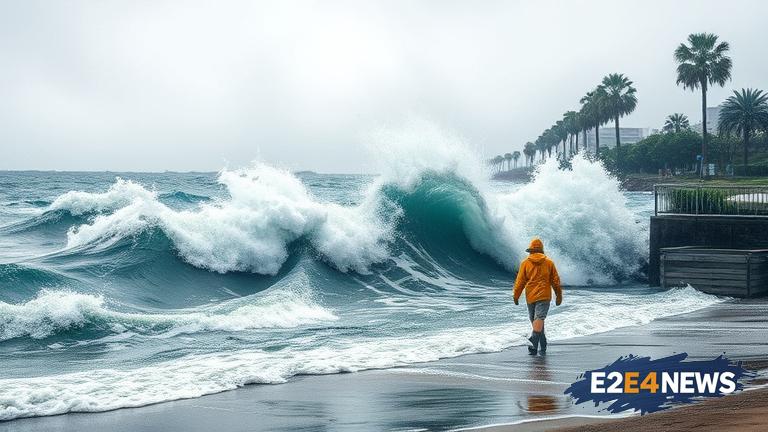A tsunami is a series of ocean waves that sends surges of water, sometimes reaching heights of over 100 feet, onto land. These walls of water can cause widespread destruction, sweeping away everything in their path. The key to surviving a tsunami is to be prepared and have a plan in place. This includes knowing the warning signs of a tsunami, such as a sudden withdrawal of the sea or a loud roar, and being aware of the evacuation routes and shelters in your area. It is also essential to stay informed about the risk of tsunamis in your region and to sign up for emergency alerts. In the event of a tsunami, it is crucial to act quickly and follow the instructions of local authorities. This may involve evacuating to higher ground or to a designated shelter. It is also important to stay away from the coast and to avoid trying to watch the tsunami from a close distance. The impact of a tsunami can be devastating, with the potential to cause widespread destruction and loss of life. The most recent tsunami to affect the United States was the 1964 Alaska earthquake and tsunami, which caused widespread destruction and killed over 120 people. Since then, there have been several other tsunamis that have affected the country, including the 2011 Tohoku earthquake and tsunami, which caused significant damage and loss of life in Hawaii and the West Coast. In order to be prepared for a tsunami, it is essential to have a plan in place and to practice it regularly. This includes identifying the safest routes to higher ground or to a designated shelter and knowing the location of emergency shelters and evacuation routes. It is also important to stay informed about the risk of tsunamis in your region and to sign up for emergency alerts. Additionally, it is crucial to have a disaster supply kit that includes essential items such as food, water, and first aid supplies. By being prepared and having a plan in place, you can help to keep yourself and your loved ones safe in the event of a tsunami. It is also important to note that tsunamis can occur at any time, and it is essential to be prepared for the unexpected. The Federal Emergency Management Agency (FEMA) and the National Oceanic and Atmospheric Administration (NOAA) provide resources and information to help individuals and communities prepare for tsunamis. These resources include guidelines for creating a tsunami evacuation plan, information on tsunami warning systems, and tips for staying safe during a tsunami. By taking the time to prepare and plan, you can help to reduce the risk of injury or loss of life in the event of a tsunami. Furthermore, it is essential to stay informed about the latest developments and research on tsunamis, as well as to participate in tsunami drills and exercises to ensure that you are prepared. In conclusion, a tsunami can be a devastating natural disaster, but by being prepared and having a plan in place, you can help to keep yourself and your loved ones safe. It is essential to stay informed, have a plan, and practice it regularly to ensure that you are ready for the worst. Tsunamis can have a significant impact on communities, causing widespread destruction and loss of life. However, by working together and being prepared, we can reduce the risk of injury or loss of life and help to keep our communities safe. The importance of tsunami preparedness cannot be overstated, and it is essential that individuals, communities, and governments take the necessary steps to prepare for these devastating events. By doing so, we can help to save lives and reduce the impact of tsunamis on our communities.
